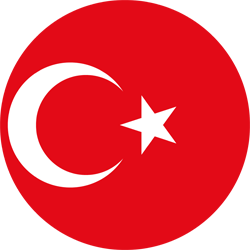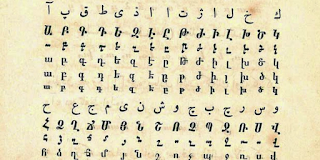The Turkish language is the official language in two countries, Turkey and Cyprus. It is also spoken in 9 more countries in Southeast Europe and Western Asia. The Turkish language (called Türkçe) is the 16th most spoken language in the world with approximately 83 million native speakers and this doesn't include the ones who speak or learned the Turkish language as a second language.
The Turkish language originated from the Turkic language family which is spoken natively by 170 million people across Central Asia including Azerbaijani (Azeri), Kazakh, Kyrgyz, Tatar, Turkmen, Uighur, and Uzbek, in addition to other countries from the Balkans across Central Asia into northwestern China and southern Siberia.
History of the Turkish Language
The Turkish Language forms the continuation of Ottoman Turkish, a Western Oghuz language from the Oghuz group of Turkic languages. The language is spoken in the geography of the former Ottoman Empire, which includes Turkey, the Balkans, the Aegean Islands, Cyprus, and the Middle East.
Regarding the linguistic development of the Turkish language, four periods can be noticed:
1- Old Turkish (Anatolian and Ottoman) - between the 13th and 16th century
2- Middle (Ottoman) Turkish, between the 17th and 18th century
3- Newer (Ottoman) Turkish, in the 19th century
4- Modern Turkish, in the 20th century
Going back to the old Turkish, it absorbed a great number of Arabic and Persian words and even grammatical forms, the old Turkish was written in Arabic script. This script was replaced later by the Latin script after the Atatürk's revolution which ended with the foundation of the Turkish republic in 1923.
In spite of disputes and resistance, the language resulted greatly in purifying the Turkish vocabulary of foreign elements and an essentially new literary language emerged, and the older one soon became obsolete. The Alphabet revolution took place 5 years after the foundation of the Republic of Turkey and the language revolution took place 9 years after the foundation of the Republic.
Writing Systems of the Turkish Language
Due to the spread of people using the Turkish language around various parts of the world and their interaction with different cultures, the Turkish language ended up having many writing systems.
The oldest Turkish alphabet which was dated to the beginning of the 8th century is the Orkhon alphabet, which was later replaced by the Old Uyghur alphabet. After spreading to different regions, the Turkish tribes adopted new writing systems such as Cyrillic, Greek, Hebrew, and Latin alphabets. The tribes that spoke Oghuz languages had contact with Islam and as a result, the Persian-Arabic alphabet-based writing systems were developed. This system has been used until the new Latin-based Turkish alphabet which was adopted after the foundation of the Republic of Turkey in 1928.
Orkhon and Old Uyghur alphabets
Turkish alphabet of Arabic origin
Other Turkish alphabets
Latin-based Turkish alphabet
On November 1, 1928, this 29-letter alphabet adapted from the Latin script for Turkish was adopted, replacing the old Arabic-origin Turkish alphabet. Alphabet Revolution is the name generally given to the process of adopting this law and placing the new alphabet in Turkey. This alphabet is used for Turkish in Turkey, the Republic of Cyprus, the Turkish Republic of Northern Cyprus, and the Balkans.
The content of the Turkish alphabet is not exactly the same as the alphabets of other countries that use Latin letters in their writing systems but contains letters derived to meet the sounds of the Turkish language ( Ç , Ş , Ğ , I , İ , Ö , Ü ). In addition, the letters Q , W, and X in the ISO basic Latin alphabet are not included in the Latin-based Turkish alphabet.
In the alphabet, each letter is usually equivalent to a phoneme; however, some letters may constitute more than one sound. For example, the letter 'e' forms the sound /æ/ in the first syllable of the word "come" and the sound /e/ in the last syllable. The pronunciation of the letters in the Turkish alphabet is also different from the pronunciation of the letters in some Western languages.
Listen to how the Turkish alphabet is pronounced:














No comments:
Post a Comment